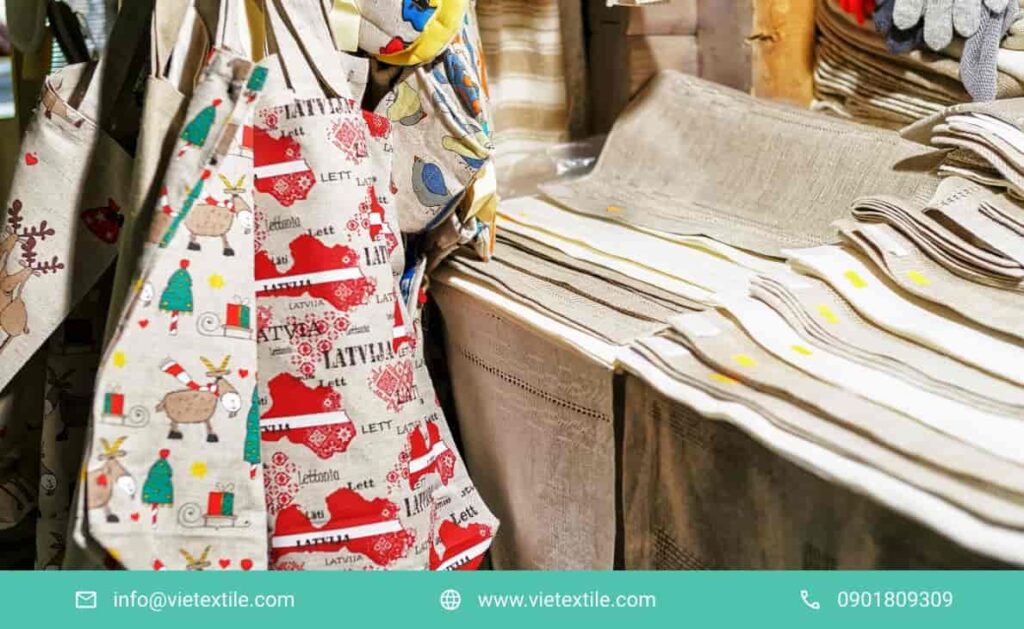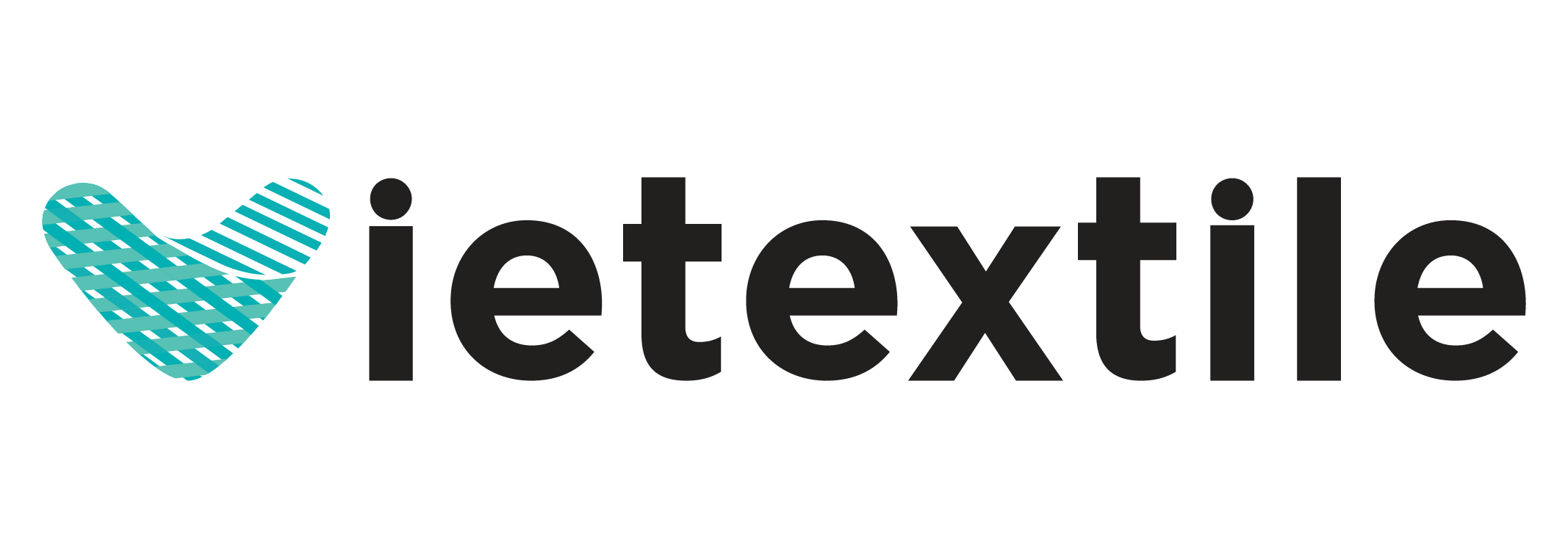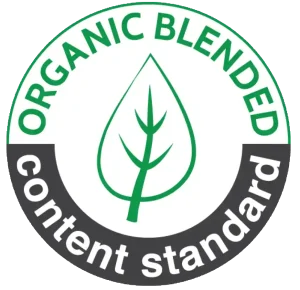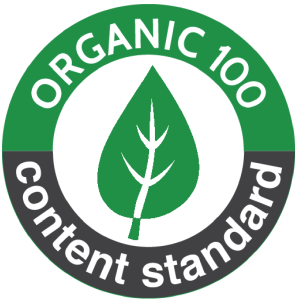The global market for performance apparel, including sportswear, athleisure, and technical outdoor gear, demands exceptional durability, vibrant aesthetics, and functional integration. At the heart of this market is nylon (polyamide) fabric, prized for its strength, elasticity, and quick-drying properties. Successfully applying high-quality, long-lasting direct prints onto nylon is a significant technical challenge, primarily due to the fiber’s chemical resistance and low melting point.
Vietnam has emerged as the preferred manufacturing hub for global brands seeking excellence in this niche. The country’s success is built upon strategic investment in specialized printing technology, deep expertise in dye-sublimation chemistry, and rigorous quality control protocols. This commitment allows Vietnamese manufacturers to consistently achieve prints that are not only visually stunning but also meet the demanding wash and stretch performance requirements of performance apparel. This article explores the specific reasons—from technological mastery to supply chain synergy—that make the market for vietnam direct printing nylon fabric the world’s choice.

1. Understanding The Technical Challenges Of Nylon Fabric Printing
Nội dung tóm tắt
ToggleNylon, a synthetic thermoplastic polymer, presents an entirely different set of technical hurdles compared to natural fibers like cotton. Its inherent structure requires specialized printing techniques, mainly dye-sublimation, to ensure the print becomes a permanent part of the fiber rather than just sitting on the surface. Achieving reliable and vibrant results with vietnam direct printing nylon fabric is a testament to the industry’s technological adoption.
The core challenge lies in the “thermoplastic” nature of nylon. Unlike cotton, which uses pigment inks bonded by heat, nylon printing requires the colorant to vaporize and permanently infuse into the fiber’s molecular structure. This process must be precisely controlled to avoid heat damage (melting or shrinking) to the fabric. Vietnamese facilities have mastered the delicate balance between high-heat infusion and fabric integrity, setting them apart in the global supply chain.
1.1. The Necessity Of Dye-Sublimation For Nylon
For true performance apparel, the print must stretch, breathe, and withstand hundreds of washes without fading. Traditional direct-to-garment (DTG) pigment inks, suitable for cotton, sit on the surface and will crack or peel when nylon stretches. Dye-sublimation is the necessary solution for vietnam direct printing nylon fabric.
Dye-sublimation uses special disperse dyes that turn into a gas when heated to high temperatures (around 200°C). This dye gas permeates the open pores of the nylon fibers and then solidifies, becoming trapped within the fiber itself. Because the color is in the fiber, not on it, the print remains soft, highly stretchable, and virtually impervious to fading from washing or UV exposure—essential features for garments like swimsuits, running leggings, and cycling gear.
1.2. Low Melting Point And Heat Management
Nylon’s relatively low melting point (compared to polyester) demands extremely precise heat and pressure management during the sublimation phase. If the heat is too high or the exposure time is too long, the nylon fabric can melt, yellow, or suffer irreparable dimensional change (shrinkage or distortion). This precision is critical when producing vietnam direct printing nylon fabric.
Vietnamese manufacturers invest heavily in state-of-the-art rotary heat presses and flatbed presses equipped with closed-loop temperature control systems. These systems monitor and adjust the heat settings in real-time, often to within a single degree Celsius, ensuring that the dye-sublimation occurs efficiently while preserving the structural integrity and hand-feel of the delicate nylon fabric.
1.3. Dye Migration And Color Bleeding Issues
A common problem in nylon printing is dye migration, where the base dye color of the fabric bleeds into the printed design, causing colors to shift or look muddy over time. This is especially challenging when printing light colors on dark nylon. The advanced process used for vietnam direct printing nylon fabric addresses this through specialized protective coatings applied before printing.
These coatings act as a barrier layer, preventing the movement of existing dyes during the sublimation process. Furthermore, manufacturers use high-quality disperse dyes with specific molecular sizes optimized for nylon, ensuring they bond correctly and do not ‘escape’ the fiber structure after curing. This meticulous approach guarantees color fidelity and high-resolution detail even on complex, multi-colored designs.
2. Mastery Of The Dye-Sublimation Workflow In Vietnam
The success of vietnam direct printing nylon fabric is rooted in a refined, multi-step workflow that maximizes dye penetration and print quality while controlling fabric damage. This process has been standardized across leading Vietnamese facilities, creating a highly reliable and repeatable result demanded by international apparel brands.
The workflow involves initial preparation, precise printing onto transfer paper, flawless transfer application via heat, and mandatory post-production inspection. Each stage is handled by highly skilled technicians who understand the nuanced chemical and physical interactions occurring between the heat, the dyes, the paper, and the nylon polymer. This mastery of process distinguishes Vietnam’s offering in the technical textile sector.
2.1. Importance Of The Transfer Paper
In dye-sublimation, the design is first digitally printed onto a temporary medium: specialized coated transfer paper. The quality of this paper is non-negotiable for high-resolution vietnam direct printing nylon fabric. Low-quality paper can absorb too much dye, leaving behind a faint image, or release the dye unevenly, causing banding or mottling.
Vietnamese operations use high-release sublimation papers, which are chemically designed to release up to 95% of the printed dye when heated. This maximizes color density and ensures every detail from the digital file is perfectly transferred to the nylon fabric. The paper acts as a high-fidelity temporary carrier, essential for achieving the sharp edges and fine line work required for high-performance graphics.
2.2. Precision Printing On Transfer Mediums
High-resolution graphics, often reaching 1200 DPI or more, must be printed onto the transfer paper using wide-format inkjet printers equipped with industrial-grade piezo print heads. These printers control the droplet volume of the disperse dye inks with extreme accuracy, preventing oversaturation or bleeding on the paper itself.
The RIP software used to drive these machines is constantly calibrated to manage color profiles (ICC profiles) and ink limits specifically for nylon. This digital control guarantees that when the dye is transferred to the nylon fabric, the resulting colors are precisely matched to the client’s specifications, a cornerstone of reliable vietnam direct printing nylon fabric production.
2.3. The Transfer Process And Its Variables
The actual transfer (sublimation) process is the moment of truth. It requires the precise coordination of three critical variables: time, temperature, and pressure. Small variations in any of these factors can result in quality defects such as ghosting (a shadow effect), patchy color, or permanent damage to the nylon.
High-end rotary presses used in Vietnam apply continuous, even pressure across the entire width of the fabric while maintaining a narrow temperature band (e.g., 205°C ± 2°C) for a specific duration (e.g., 40-60 seconds). This control ensures the dye fully vaporizes and permeates the nylon fibers completely, establishing a robust and permanent bond vital for durable vietnam direct printing nylon fabric.
3. Advanced Ink Chemistry and Color Consistency

The chemical properties of the disperse dyes used are fundamental to the quality of vietnam direct printing nylon fabric. Unlike universal dyes, nylon requires specific disperse dyes engineered to have the correct sublimation temperature and molecular size for the polyamide fiber structure.
Vietnamese manufacturers work closely with international dye suppliers to procure high-purity disperse dyes. These dyes must not only produce a brilliant color gamut but must also possess excellent lightfastness and resistance to chlorine and perspiration—a key requirement for performance wear. The stability of these dyes under extreme heat ensures color consistency from the first meter to the last.
3.1. Achieving Color Depth On Nylon
Nylon is naturally receptive to acid dyes, but acid dyeing can be complicated and often lacks the flexibility needed for digital printing. Disperse dyes, used in sublimation, are the preferred choice. Achieving deep, rich colors—especially blacks and vibrant reds—on nylon requires maximizing the concentration of dye that can be successfully infused into the fiber.
This is managed through the RIP software settings, which carefully control the ink load on the transfer paper. Vietnamese technicians possess the expertise to push the dye concentration to its limit without causing bleeding or color saturation issues on the nylon. This meticulous calibration ensures the vibrant, high-impact colors that consumers demand from premium vietnam direct printing nylon fabric products.
3.2. Lightfastness And Performance Requirements
Performance apparel is often exposed to harsh conditions: intense sunlight (UV exposure), high friction, and continuous exposure to sweat and chlorine (in swimwear). A print failure in any of these areas is unacceptable for global brands. The dyes selected for vietnam direct printing nylon fabric are tested for superior lightfastness.
Standards like the AATCC 16 or ISO 105 B02 are used to grade the prints’ resistance to fading under simulated sunlight. Only prints that achieve high ratings (typically Grade 4 or higher) are approved for production. This focus on performance durability, driven by specialized chemistry, is a major factor in Vietnam’s appeal to technical apparel brands.
3.3. Printing On Different Types Of Nylon
Nylon comes in various forms, including Nylon 6, Nylon 6,6, and blended variations like those containing Spandex/Elastane (for stretch). Each type has slightly different thermal and chemical properties. The print parameters for vietnam direct printing nylon fabric must be adjusted accordingly.
Nylon/Spandex blends, common in activewear, are the most challenging because Spandex is extremely sensitive to heat. Manufacturers in Vietnam utilize lower-temperature sublimation profiles and shorter dwell times to protect the Spandex fibers from degradation while still achieving successful dye transfer into the nylon component. This flexibility and nuanced understanding of material science are a key advantage.
4. The Role Of Strategic Supply Chain Synergy
Vietnam’s success in vietnam direct printing nylon fabric is not solely due to technical capability; it’s also a function of its highly integrated and strategically positioned supply chain. The combination of advanced fabric milling, finishing, and printing services within close geographical proximity streamlines production and reduces lead times for complex products.
Unlike regions where different stages of production (knitting, printing, cutting, sewing) are geographically dispersed, Vietnamese supply chains offer a seamless, end-to-end service. This vertical integration allows for faster communication, tighter quality control loops, and minimized logistical costs, making Vietnam a highly efficient option for global brands.
4.1. Vertical Integration And Lead Time Reduction
Vertical integration means that the fabric, which may be knitted or woven in a Vietnamese mill, can be sent directly to the printing house and then to the garment factory for cutting and sewing—all within the same industrial zone. This dramatically reduces the lead time compared to shipping materials across borders for each process.
For high-demand, seasonal performance apparel, this speed is critical. Brands choose vietnam direct printing nylon fabric because they can move from design concept to finished garment far quicker than in less integrated manufacturing environments. This agility is a powerful economic advantage in fast-moving apparel markets.
4.2. Availability Of Specialized Nylon Base Fabrics
Vietnam has seen a parallel growth in its technical textile mills, which now produce high-quality base nylon fabrics specifically engineered for digital printing. These fabrics are often pre-treated with proprietary coatings to enhance dye receptivity and have been heat-set to minimize shrinkage during the sublimation process.
The ability to source large quantities of print-ready nylon fabric domestically means reduced reliance on imported materials, offering better cost control and supply security. This local availability of optimized technical textiles is a foundational pillar supporting the high quality and volume of vietnam direct printing nylon fabric production.
4.3. Compliance With Global Sustainability Standards
Global brands are under immense pressure to meet strict sustainability and ethical manufacturing standards. Vietnam has actively responded by ensuring its textile production complies with international certifications such as OEKO-TEX Standard 100, GOTS, and ISO 14001.
Choosing vietnam direct printing nylon fabric means choosing partners who adhere to rigorous environmental waste management and chemical use protocols. The water-based nature of dye-sublimation inks inherently makes the process cleaner than many traditional printing methods, and Vietnamese facilities ensure compliance with discharge regulations, giving brands confidence in their supply chain ethics.
5. VieTextile’s Critical Contribution To Vietnam Direct Printing Nylon Fabric

VieTextile plays an indispensable role in maintaining the high standards and operational efficiency that underpin Vietnam’s reputation for superior vietnam direct printing nylon fabric. The intricate and demanding nature of dye-sublimation machinery requires components that can withstand extreme heat and continuous high-volume operation.
We specialize in providing the high-precision textile spares necessary for the sophisticated machinery used in dye-sublimation printing. Our focus ensures minimal downtime for critical assets such as large format rotary heat presses, industrial calendar machines, and high-speed inkjet print heads. We understand that even a minor component failure can halt a production line, jeopardizing timely delivery of performance apparel orders. VieTextile’s responsive supply chain and technical service are designed to counteract this risk effectively.
We maintain a strategic inventory of components specific to dye-sublimation technology, including specialized heaters, precise pressure rollers, Teflon conveyor belts, and high-fidelity print head assemblies. The reliability of vietnam direct printing nylon fabric hinges on the continuous, accurate function of these parts. By supplying only genuine, tested spare parts, VieTextile guarantees that the printing machinery operates within the narrow tolerances required for successful dye infusion into the delicate nylon fibers.
Our commitment extends to proactive maintenance consulting. We work with technicians to optimize machine performance, advising on component upgrades that can improve heat transfer uniformity and energy efficiency. VieTextile is committed to supporting the technological backbone that allows Vietnam to excel in producing world-class vietnam direct printing nylon fabric. We are not just a supplier; we are a strategic partner in ensuring Vietnam’s competitive edge in the advanced textile manufacturing sector.
6. Rigorous Quality Assurance: Meeting Performance Apparel Standards
The true measure of vietnam direct printing nylon fabric quality is its ability to perform under stress. Performance apparel faces high demands: repeated stretching, exposure to sweat, UV light, and harsh washing cycles. Therefore, quality assurance (QA) protocols in Vietnam are exceptionally stringent, often going beyond visual inspection to quantifiable laboratory testing.
This commitment to verifiable performance metrics is a primary reason why major global sportswear and outdoor brands place their most technically challenging orders in Vietnam. The QA process is integrated, ensuring that the final print is not only aesthetically perfect but structurally and chemically sound, guaranteeing longevity and consumer satisfaction.
6.1. Stretch And Recovery Testing
The most critical test for any printed nylon used in performance wear is its stretch and recovery performance. The print must stretch seamlessly without cracking or distorting and must return perfectly to its original state when relaxed. This is measured using specialized textile testing machines that cycle the fabric through defined extension and recovery phases.
The QA standards for vietnam direct printing nylon fabric demand zero visual degradation after multiple stretch cycles. This is achieved because the dye is infused into the fiber, not layered on the surface, allowing the nylon and the print to move as one seamless material.
6.2. Perspiration And pH Testing
Performance apparel is designed to absorb and wick away sweat. The printed fabric must resist color bleeding or fading when exposed to perspiration, which is mildly acidic. Vietnamese labs conduct artificial perspiration testing by saturating the fabric with acidic and alkaline solutions (AATCC Test Method 15) and assessing color change and dye transfer.
Only fabrics demonstrating high colorfastness to both acidic and alkaline sweat are approved. This chemical resilience is a non-negotiable requirement for high-end vietnam direct printing nylon fabric used in athletic wear, ensuring the print remains bright and stable throughout intense use.
6.3. Advanced Abrasion And Rub Testing
The continuous movement and friction (crocking) that occurs during vigorous activity can quickly degrade a poor-quality print. Abrasion resistance is tested using Martindale or Taber abrasions machines, which rub the printed fabric surface under controlled pressure.
The high-quality dye-sublimation process used for vietnam direct printing nylon fabric inherently resists abrasion better than surface-printed pigment inks. QA protocols monitor the print for any color loss or breakdown after a specific number of rubs, certifying that the print will remain intact even on high-friction areas like shoulders, cuffs, and inner thighs.
7. The Future Outlook For Vietnam Direct Printing Nylon Fabric
Vietnam’s dominance in this specialized field is set to grow further, driven by continued investment in automation, sustainable technology, and advanced material science. As global brands increasingly demand customization, shorter lead times, and verifiable sustainability, the capabilities provided by the vietnam direct printing nylon fabric sector become more valuable.
Future developments will likely focus on integrating AI-driven defect detection during the print run, reducing the environmental footprint of the process even further through closed-loop water systems, and expanding capability to handle next-generation technical fibers like recycled and bio-based nylon blends. Vietnam’s proactive approach ensures it will remain at the forefront of technical textile printing for years to come.
7.1. Automation And Robotics In Printing
The next wave of optimization for vietnam direct printing nylon fabric involves integrating robotics into material handling. Automated systems for loading and unloading fabric onto the wide-format presses and conveying the paper and fabric through the heat presses will minimize human error, increase speed, and ensure even greater consistency in print registration and tension control.
7.2. Advancements In Sustainable Dyes
While current disperse dyes are relatively safe, research is ongoing into even more sustainable, low-impact dye chemistry. Vietnamese facilities are positioned to be early adopters of these next-generation dyes, which promise lower sublimation temperatures and reduced energy consumption, further enhancing the eco-profile of vietnam direct printing nylon fabric production.
7.3. Integration Of Smart Textiles
As performance apparel evolves, demand is increasing for smart textiles with integrated sensors or conductivity features. Vietnamese manufacturers are exploring how to digitally print conductive inks onto nylon alongside decorative prints, creating “smart” vietnam direct printing nylon fabric that can monitor heart rate or temperature without compromising durability or comfort.
The technical superiority and integrated efficiency of the manufacturing sector ensure that global brands will continue to rely on Vietnam for high-performance apparel.
To secure your production line’s efficiency and ensure peak performance for your vietnam direct printing nylon fabric operations, trust VieTextile for high-quality, reliable textile spares and expert technical support.
Thông tin liên hệ:
Hotline: 0901 809 309
Email: info@vietextile.com
Website: https://vietextile.com










